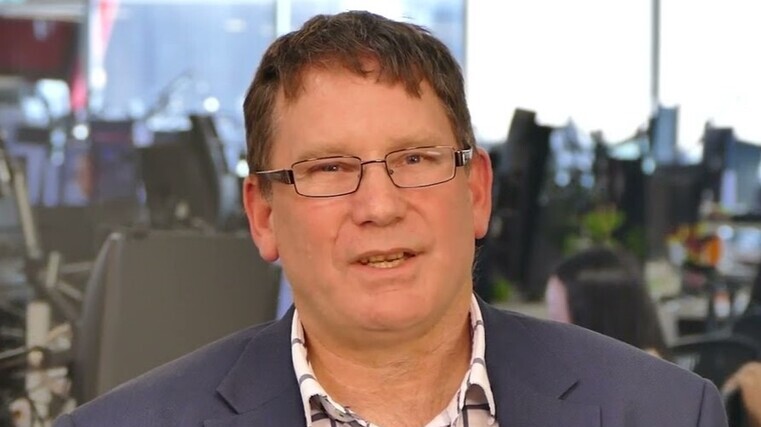Green shoots of recovery

Lower interest rates and strong export returns are continuing to support demand in New Zealand’s economy, according to Westpac’s latest economic overview.
Kelly Eckhold, the bank’s chief economist, says uncertainty associated with the trade war, ongoing cost-of-living pressures and the still-slow pass-through of past cuts in the official cash rate (OCR) into household budgets have been weighing on activity.
His overview for August adds: “Globally, the outlook is less dire than feared in May largely because worst-case scenarios have so far been avoided. The US tariff framework now looks clearer. New Zealand’s 15 per cent tariff is disappointing but manageable.
“Despite volatility, exporters have weathered the storm and in many cases are successfully passing on tariff costs to customers.
“Inflation will remain elevated through the next six months. But with significant spare capacity in the economy, there’s a reasonable expectation it will ease in 2026. The timing and degree of that decline remain uncertain. Very low outcomes are unlikely at this stage.”
The report states pressures on households’ finances are high because the labour market has cooled and cost-of-living pressures have mounted.
“Increases in costs for household essentials, such as food and energy, have been difficult on households hence spending appetites remain modest, especially for discretionary items,” explains Eckhold, pictured.
However, it’s a mixed picture across New Zealand. In regions such as Canterbury, Otago and Southland, strong commodity prices are boosting incomes, sentiment and spending.
In contrast, spending is softer in metropolitan regions like Wellington, consistent with the downturn in parts of the service sector, reports Echkold.
As for migration, foreign arrivals have steadied at around pre-Covid levels, while a substantial number of Kiwis are still heading for the “more vibrant” Australian jobs market.
“We expect a net inflow of around 17,000 people for this year. For next year, we expect this to rise to a net inflow of 37,000 based on a relative improvement in job prospects in New Zealand compared to Australia, and an upfront boost to arrivals of around 10,000 under the parent-boost visa.”
The October issue of Autofile will be looking into the markets in more depth. To subscribe to the magazine, click here.
Households ‘feeling under par’
The ANZ’s economic outlook published in August predicts the domestic outlook to remain, unsurprisingly, as the top consideration impacting investment decisions.
“But for firms that expect to invest more, central government policy has lifted likely reflecting the Investment Boost policy announced in budget 2025,” says the bank.
“Meanwhile, the global outlook remains a key consideration among those expecting to invest more and those who say they will invest less.
How these forces net out is a big unknown, but our forecast is for a relatively gradual recovery in business investment with risks on both sides.”
Domestically, ANZ reports there appears to be a lot more than heightened global uncertainty weighing on momentum.
“Households appear to be feeling well under par, which is understandable when you consider household inflation expectations remain elevated – likely reflecting high inflation for some necessities, such as food.
“The good news is most measures of inflation-adjusted wage growth are back in positive territory even if households don’t believe it. The bad news is households are becoming increasingly worried about job security as the labour market continues to soften.
“It’s not just a wages story. Demand for labour is looking particularly weak with hours worked and employment growth in the red.
“The fact that growth in hours worked is now well-below employment growth suggests firms are reducing hours before potentially resorting to lay-offs. Until the labour market starts feeling a little better, it’s hard to see households feeling gung-ho any time soon.
“We remain optimistic that we’re on route towards recovery even if it is a little delayed. It’s a relatively gradual recovery from a low base – meaning it doesn’t feel like much – but further monetary easing should make it happen.”
ANZ thinks the country is now potentially past peak pessimism with some early data for the third quarter picking up, albeit not strongly, and the Reserve Bank’s August monetary police statement signalling it’s willing to provide a little more support than previously.
“Our forecast is for the economy to expand just 0.7 per cent in 2025, reflecting only a very gradual recovery in underlying momentum from what turned out to be a soft 2024. But as monetary easing continues, we expect momentum to gather with the economy expanding 2.7 per cent in both 2026 and 2027.
“That’s not gangbusters by any means, but it is consistent with the Reserve Bank’s cautious approach to easing, given lingering pockets of strength in the CPI.
“At the end of the day, there can be no sustained recovery without the household sector. Given the lengthy list of headwinds facing households, the major tailwind of easing monetary conditions will have to blow a little harder.
“In big-picture terms, we expect domestic momentum to gradually recover over the coming year or so as household consumption and investment recover.”
Some green shoots wilting
ASB issued an economic note on September 10. The bank expects the slowdown to be characterised by declines in initial green shoots, such as manufacturing, exports and business services, while weaker sectors, like construction and residential investment, have remained soft.
And finally, Brad Olsen, Infometrics’ chief executive and principal economist, says: “Despite falling interest rates, several household costs are rising at an accelerating rate and higher unemployment is worrying all.
“Although New Zealanders don’t seem to be increasingly feeling like the economy is going to get worse, they can’t see things getting any better any time soon either.”
To subscribe to Autofile magazine, click here. The October issue will be looking into the markets in more depth.





